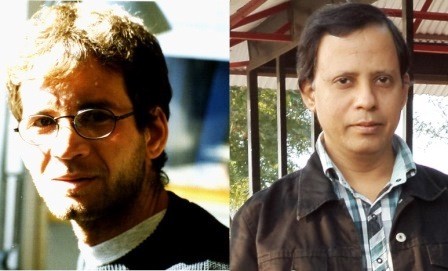The famous uncertainty relation introduced by Werner Heisenberg in 1927 is a basic feature of quantum theory enshrined in all textbooks. Two theoretical physicists now report1 they have discovered a new "stronger uncertainty relation" that goes beyond the Heisenberg relation with far ranging implications.
"The proof of this new uncertainty relation, discovered more than 100 years after the development of quantum theory, is simple, and one can even teach this at graduate levels," one of the authors Arun Kumar Pati at the Harish-Chandra Research Institute (HRI) in Allahabad, told Nature India .
One of the distinct features of quantum mechanics is quantum uncertainty, meaning not all properties of a system can be determined accurately. The Heisenberg uncertainty principle states there is a limit to the precision with which a pair of complementary variables — such as a particle's position and momentum — can be measured simultaneously. The more precisely the position of a particle is determined, the less precisely its momentum can be known, and vice versa.

Lorenzo Maccone (left) and Arun Pati
There are two aspects of uncertainty — uncertainty 'relation' and uncertainty 'principle' — explains co-author Lorenzo Maccone at the University of Pavia, Italy. The first refers to the impossibility of the preparation of a system in which two 'incompatible' observables, such as the position and momentum of a quantum object, have well defined properties. It was rigorously formalized by H. P. Robertson of Princeton University in 1929 into what is now called the Heisenberg-Robertson uncertainty relation. While recent literature has focused on uncertainty principle, Maccone and Pati's results focus on the uncertainty relation.
"We noticed that the Heisenberg-Robertson inequality does not fully capture the notion of incompatible observables since the uncertainty relations are expressed in terms of the product of the 'variances' of measurements of the observables," the authors say. "This means the product is zero when one of the two variances is zero even if the other variance is non-zero." This, says Pati, is the flaw in the Heisenberg-Robertson uncertainty relation.
To overcome this limitation, Maccone and Pati have proposed a new uncertainty relation that employs the sum of the variances (rather than their product). Since the variance is a positive quantity, the sum will always be non-zero unless both variances are zero which happens only if the observables are "compatible" meaning they have a definite value. "In this sense, our results fully captures the notion of incompatible observables in contrast to the Heisenberg-Robertson inequality thus making the uncertainty relation much stronger," the physicists claim. The results suggest the quantum world is more uncertain than what the Heisenberg-Robertson uncertainty relations make us believe.
According to the authors, their result also explains another aspect of quantum mechanics called complementarity — an extreme form of uncertainty — where one of the two properties of a system is perfectly known, and the other is completely uncertain. "This is a situation where the Heisenberg-Robertson inequality fails to give significant results," the authors say.
Maccone and Pati claim the impact of the new uncertainty relations may be far ranging because they not only capture the incompatibility of observables but also of quantities that are physically measurable. Since the uncertainty relations have fundamental significance in quantum physics, the authors believe their result may find a wide range of applications in quantum technologies including quantum cryptography, quantum entanglement, quantum computation and general physics as well.
